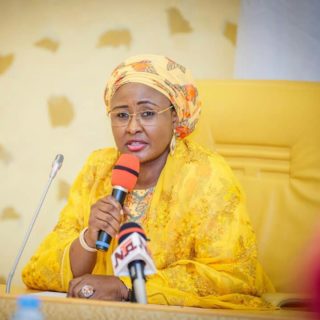Europe is witnessing its worst-ever outbreak of monkeypox since the UK Health Security Agency (UKHSA) announced the first case this year on May 7th 2022.
Since that first case, monkeypox cases have been reported in at least 20 countries. In the European Union (EU) alone, Austria, Belgium, Czech Republic, Denmark, Finland, France and Germany have reported at least one case each. Italy, Israel, The Netherlands, Portugal, Slovenia, Spain, Sweden and Switzerland are other EU countries that have been affected. Outside of the EU, Australia, Canada, the United States and the United Arab Emirates have also confirmed monkeypox cases. No deaths have been reported.
What’s Nigeria’s business with this?
The first case reported in the UK on May 7th was of a person who had recently travelled from Nigeria where they’re believed to have been infected. And even though the next two cases reported in the UK one week later had nothing to do with that first case, Nigeria has been cast as a central figure in the outbreak.
On May 27th 2022, Russian official, Igor Kirillov, accused the US of using biolabs in Nigeria to spread the virus across the world. The chief of the Russian Radiation, Chemical and Biological Defence Troops asked the World Health Organisation (WHO) to investigate the US-funded labs located in Abuja, Lagos and Zaria. This allegation is not being taken seriously by WHO, but the organisation has advised health authorities in Europe and the Americas to be on the alert for recent travellers from Nigeria where the virus is regularly found.
History of monkeypox in Nigeria
Monkeypox was first identified in humans in the Democratic Republic of the Congo in 1970, according to the WHO. Since then, the virus has been endemic in almost a dozen African countries, including Nigeria.
Nigeria’s first large-scale monkeypox outbreak didn’t happen until 2017 when the virus spread to over a dozen states and caused nationwide panic. The country has confirmed a total of 247 cases since then. This is the breakdown by year:
2017 — 88 cases
2018 — 49 cases
2019 — 47 cases
2020 — 8 cases
2021 — 34 cases
2022 (Jan – May) — 21 cases
Nine monkeypox deaths have been confirmed since 2017.
States affected by monkeypox
Since 2017, monkeypox cases have been confirmed in 22 states: Rivers (53), Bayelsa (45), Lagos (34), Delta (31), Cross River (16), Edo (10), Imo (9), Akwa Ibom (7), Oyo (6), FCT (8), Enugu (4), Abia (3), Plateau (3), Adamawa (5), Nasarawa (2), Benue (2), Anambra (2), Ekiti (2), Kano (2), Ebonyi (1), Niger (1) and Ogun (1).
Monkeypox deaths have been recorded in six states since 2017: Lagos (3), Edo (2), Imo (1), Cross River (1), FCT (1) and Rivers (1).
Despite the ongoing outbreak in Europe, the Nigeria Centre for Disease Control (NCDC) has maintained that there’s no evidence of any new or unusual transmission of the virus in Nigeria.
There have been 66 suspected monkeypox cases in Nigeria between January and May 2022, but only 21 of them have been confirmed, with one death recorded. The affected states are Adamawa (5), Lagos (4), Bayelsa (2), Delta (2), Cross River (2), FCT (2), Kano (2), Imo (1) and Rivers (1).
The NCDC is confident that there’s no significant threat to life or the community that can result in severe disease or a high case fatality rate.
How does monkeypox spread?
The monkeypox virus can spread from infected animals like monkeys, squirrels and rodents, to humans, usually through direct contact with body fluids, blood or the skin or lesions. Transmission can also happen through a bite, scratch, poor handling of, or consuming inadequately cooked or other products of infected bushmeat.
Monkeypox can also spread from human to human through contact with respiratory droplets and contaminated materials such as bedding.
What are the symptoms of monkeypox?
The symptoms of monkeypox include sudden fever, headache, body pain, weakness, sore throat, and enlargement of glands (lymph nodes) in the neck and under the jaw. These can be followed by the appearance of a rash on the face, palms, soles of the feet, genitals and other parts of the body.
The monkeypox fever can escalate the rash which tends to spread across the body of an infected person with the face and palms being the most affected. The rash can also occur in and around the genitals, which is why contact during sex is also a mode of transmission.
The illness caused by monkeypox usually lasts between two to four weeks.
How to protect yourself from monkeypox
There are many tips on how to protect yourself from monkeypox infection, but here are the highlights from the NCDC:
1. Avoid contact with host animals like monkeys, gorillas, squirrels and rodents, especially in areas where infections have been confirmed.
2. Avoid unnecessary physical contact with infected patients.
3. Practice frequent handwashing with soap and water especially after caring for, or visiting sick people.
4. Ensure all animal food products are properly cooked before eating.
5. Report all cases with the associated symptoms to the nearest health facility.




